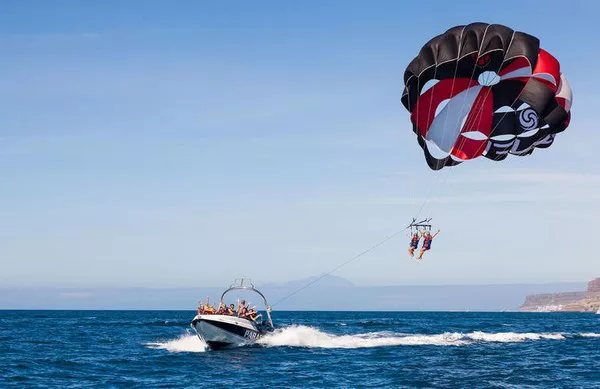Parasailing, a thrilling adventure sport, offers enthusiasts an unparalleled opportunity to soar above the scenic landscapes, feeling the rush of wind and adrenaline. As with any aerial activity, a successful landing is crucial for ensuring both safety and satisfaction. Whether you’re a novice or seasoned parasailer, understanding the techniques and dynamics of landing is essential. In this comprehensive guide, we delve into the intricacies of landing during parasailing, exploring the various methods, safety considerations, and expert tips to ensure a smooth and controlled descent.
The Pre-Landing Preparation: Setting the Stage for Success
Before embarking on the exhilarating journey of parasailing, thorough preparation is key to a safe and enjoyable experience. Proper equipment inspection, weather assessment, and briefing from experienced instructors are essential components of pre-flight protocols. Additionally, familiarizing oneself with the landing procedures and communicating effectively with the ground crew can significantly enhance the overall safety and efficiency of the landing process.
Understanding Wind Dynamics: Navigating the Air Currents
One of the fundamental aspects of mastering the art of landing in parasailing is understanding the influence of wind dynamics on descent. Wind speed, direction, and turbulence play pivotal roles in determining the approach and execution of the landing maneuver. By gauging wind patterns and adjusting flight trajectory accordingly, parasailers can optimize their descent for a controlled and precise landing.
The Approach Phase: Aligning for a Smooth Descent
As the parasailer begins their descent towards the designated landing area, executing the proper approach is critical for a successful landing. Maintaining a stable and controlled descent rate while aligning with the wind direction allows for optimal positioning and trajectory adjustment. By carefully monitoring altitude and speed, parasailers can fine-tune their approach to ensure a seamless transition from flight to landing.
Bracing for Impact: Adopting Correct Landing Posture
As the landing zone comes into view, it’s essential to prepare for touchdown by adopting the correct landing posture. This typically involves bending the knees slightly, keeping the feet together, and bracing for impact to absorb the landing force gradually. By distributing the impact across the body and maintaining stability, parasailers can minimize the risk of injury and ensure a smoother transition from air to ground.
The Role of the Ground Crew: Collaboration for Safe Landing
In the final moments before touchdown, effective communication and coordination with the ground crew are paramount. Ground handlers play a vital role in guiding the parasailer towards the designated landing spot, providing assistance if needed, and ensuring a safe and controlled descent. Clear and concise communication between the parasailer and ground crew facilitates a smooth transition from flight to ground, minimizing the risk of accidents or mishaps.
Emergency Procedures: Mitigating Risks and Ensuring Safety
While parasailing is generally a safe and exhilarating activity, unforeseen circumstances or emergencies may arise during the landing phase. It’s crucial for parasailers to familiarize themselves with emergency procedures, including protocols for wind shifts, equipment malfunctions, or unexpected obstacles in the landing area. By remaining calm, alert, and proactive, parasailers can effectively mitigate risks and ensure a safe outcome in challenging situations.
Expert Tips for Mastering Landing Techniques
- Maintain a vigilant lookout for potential hazards or obstacles in the landing area, such as trees, buildings, or power lines.
- Practice controlled steering and maneuvering techniques to adjust flight trajectory and alignment during the descent phase.
- Anticipate wind shifts or gusts and adjust flight controls accordingly to maintain stability and control.
- Stay attuned to verbal cues and signals from the ground crew to facilitate a coordinated landing approach.
- Continuously assess environmental conditions and make real-time adjustments to landing strategy as needed.
Conclusion
In the realm of parasailing, mastering the art of landing is a culmination of skill, preparation, and situational awareness. By understanding the principles of wind dynamics, executing proper approach techniques, and collaborating effectively with the ground crew, parasailers can ensure a safe and controlled descent for an unforgettable adventure. With adherence to safety protocols, continuous practice, and a spirit of adventure, enthusiasts can experience the exhilaration of parasailing while prioritizing safety and enjoyment.

